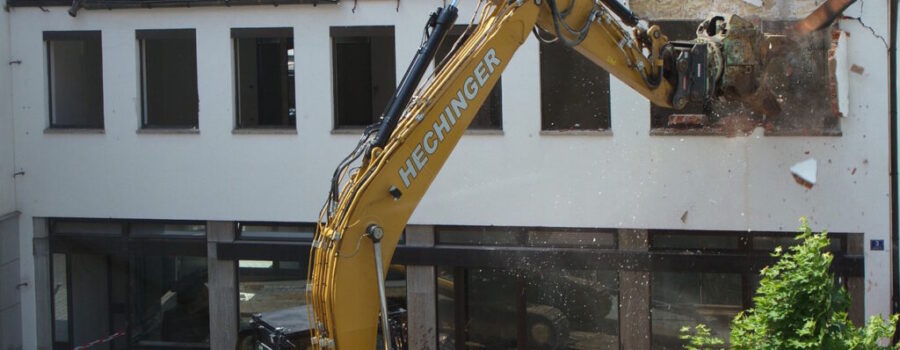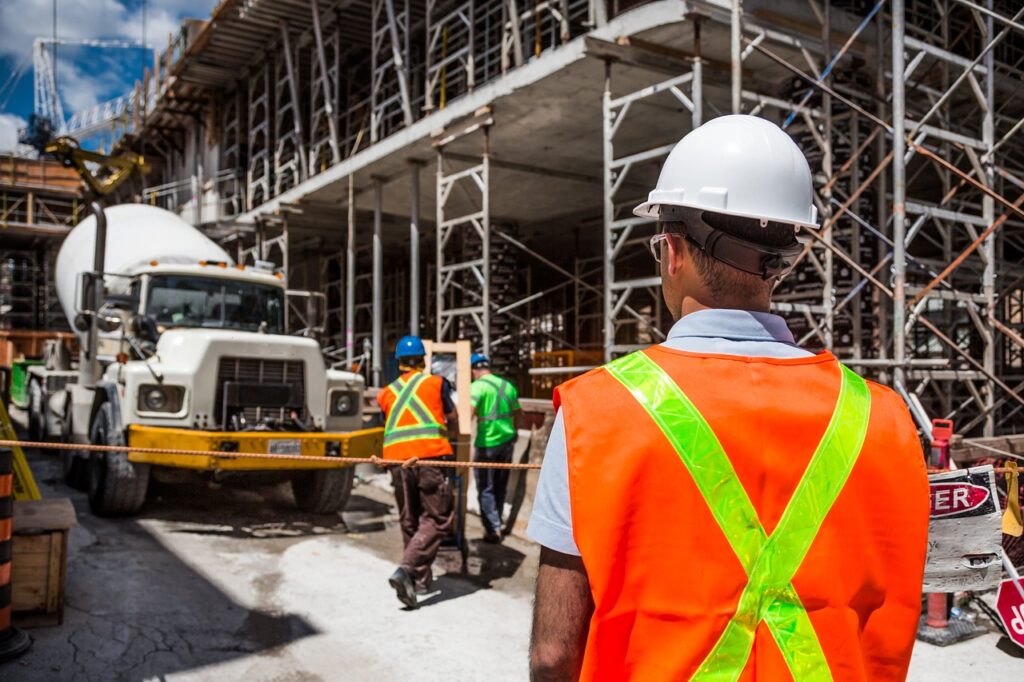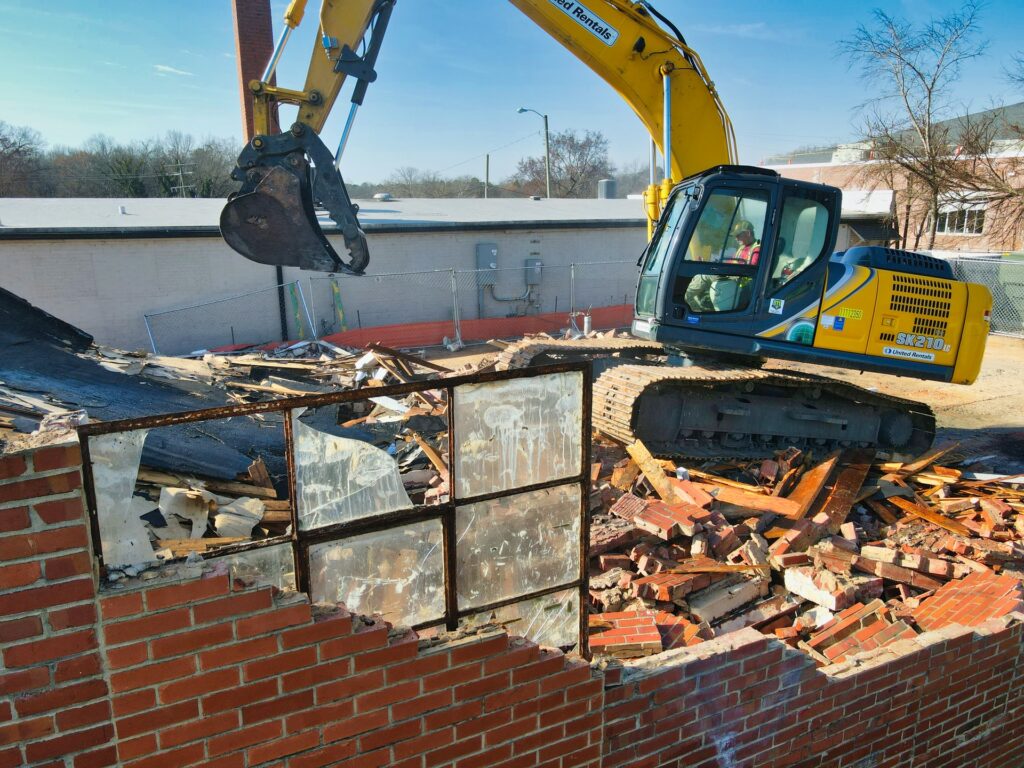
Demolition Permits and What You Need for the Demolition Process
When you want to construct a new home or develop a commercial building, the demolition process may be necessary if an existing structure has yet to be removed from the construction site. Demolition is a straightforward process that involves tearing down a structure to make way for a new one. Even though this is a relatively simple process, it can be a lengthy one depending on the size of the structure that’s being demolished.
The contractors who work on the project will need to make sure that they perform the work in a safe and secure manner. For instance, a damaged electrical system will need to be carefully removed from the premises before the remainder of the demolition can take place. Before you begin demolishing a structure of any kind, you should determine if a permit is necessary for the project at hand. In Los Angeles, permits are needed when demolishing, constructing, or altering any type of structure or building that’s situated on private property.
Keep in mind that different project sizes require different permits. For instance, a regular plan check permit is necessary for larger demolition projects. When you’re planning a demolition project, it’s important that you factor the demolition costs into the total development costs for the project as a whole. The entire demolition process can come with costs that range from $3,000-$30,000. The following article offers a detailed guide on the demolition process and the permits that are necessary to complete it.
Step 1: Hire a Contractor and Construction Company

The initial step in the demolition process involves hiring a contractor and construction company for the job. Even though you’re able to make the final decision on the contractor and construction company you want to hire, it’s important to understand that demolition work can only be done by a licensed contractor in California. If you hire a demolition contractor, they must have a class C-21 license. In the event that you hire a general contractor, they should be able to show you a class B-1 license.
To make sure that you hire the right contractor, it’s highly recommended that you do some research before making your decision. Many contractors and construction companies have Better Business Bureau ratings that can give you a good idea of the reputation that each company has. You should also speak with the contractor before hiring them to ask some questions.
For instance, you could inquire about their experience with projects like yours. You could also ask about their billing structure. Most contractors and construction companies will provide initial estimates that can give you a good idea of what the final demolition costs will be. Keep in mind, however, that these are just estimates and don’t always take into account unforeseen issues that could increase total project costs.
Step 2: Plans, Inspections, and Permits
When you plan on completing a demolition project in Los Angeles, a permit will always be needed before work can begin. If the structure or building is situated on private property, a permit must be obtained if the structure is being demolished or altered in any way. You can obtain a permit from the Los Angeles Department of Building and Safety. As mentioned previously, the type of permit you require depends on the project size.
In general, there are four different permit types that can be obtained for a demolition project, which include express permits, counter plan checks, expanded counter plan checks, and regular plan checks. An express permit is available for smaller projects like kitchen remodels and drywall replacements. The main benefit of being able to obtain an express permit is that these permits can be applied for online, which means that you won’t need to wait long to start your project.
If you want your permit application to be approved, you must provide the LADBS with plans that detail the amount of work you’ll be doing during the demolition process. For demolition projects, you’ll be tasked with submitting a grading plan alongside your application. The primary grading plan requirements that you should adhere to include:
- Elevations and contours
- A detailed legal description of the property or structure
- Grading and clearing limits
- Details about control measures you’re taking for sediment and erosion
- Information about existing boundaries and topography
- Details about the foundation and basement areas that may need to be filled or demolished
With the grading plan in hand, all that’s left for you to do is request an inspection. Keep in mind that this inspection will need to take place before the demolition occurs. A building inspector will need to take a look at the demolition site before you’re able to receive a demolition permit. They will inspect the entire site to make sure that the demolition can occur as planned without significantly altering the land or other aspects of the property.
You can request an inspection by going to this link and entering your 15-digit permit number. Along with your permit number, you should also be able to input the inspection type and site address to properly schedule the inspection. Once inspection day rolls around, there are some things that you’ll want to have on hand, which include:
- Approved grading plans
- One copy of your demolition permit
- The building card that was given to you when you received your permit
- Equipment that allows the inspector to complete their job, which can include a ladder
Step 3: Final Step – Deconstruction and Demolition

The third and final step of the demolition process involves the actual deconstruction and demolition of the structure or building in question. Keep in mind that deconstruction and demolition are two different processes, both of which could be required during the project. There are three distinct methods that can be used to tear down a building or home, which include mechanical demolition, partial deconstruction, and mechanical demolition, and complete deconstruction.
Mechanical demolition is a very simple and straightforward way of tearing down a building. All that’s needed is an excavator to demolish the building. Once the demolition is finished, hardly any salvaging should be necessary. Because of how basic this type of demolition is, it can be completed in less than a day. However, mechanical demolitions aren’t possible in every city. In Los Angeles, 50% of the demolition materials need to be recycled, which means that a mechanical demolition likely can’t be done.
To avoid the issues that come with completing a mechanical demolition in Los Angeles, you might want to opt for a partial deconstruction and mechanical demolition. If you choose this option, most of the reusable materials within the structure will be salvaged before the demolition takes place. These materials include windows, cabinetry, and appliances. When the reusable materials have been removed from the structure, demolition can occur, after which the debris will be taken away from the demolition site.
The third and final option available to you involves a complete deconstruction. While a partial deconstruction only requires the removal of most reusable materials, a complete deconstruction involves the removal of every reusable material in the building, which can extend to nails, plumbing, and floorboards. This option is the most sustainable one that you can use when demolishing a building.
Steps to Streamline the Demolition Process
There are several steps you can take if you want to streamline the demolition process and make sure that it’s completed as quickly as possible. Before starting the demolition, consider hiring someone to look for asbestos. If any asbestos exists in the property, it must be removed before the demolition can take place. Asbestos is a natural mineral that was once used in the creation of many building materials. It was discovered, however, that asbestos can cause mesothelioma, which is a deadly malignant tumor. As such, it can no longer be used in building materials.
Keep in mind that all utilities that are connected to the structure should be disconnected before the demolition process goes forward. There are a range of dangerous problems that could occur if you attempted to rip out gas and electricity lines, which is why they should be handled properly by a professional. If the project is set to be large in scope, it’s highly recommended that you find another place to stay while the project is ongoing. A sizable amount of dust and debris will invariably be created during the process, which can make your home unlivable until the area has been cleaned.
Once the demolition is finished, the debris will be taken away. As touched upon earlier, 50% of the materials will need to be recycled in Los Angeles. You have complete control over how these materials are recycled and where you take them. Consider renting a dumpster to reduce the size of the mess and make sure that most of the debris is kept in one spot.
Summary

The demolition process can be a costly and time-consuming one. However, it’s also essential for a large number of construction and renovation projects. While you’ll be tasked with obtaining a permit before the demolition can occur, these permits are easier to get when compared to building permits for new construction. Once you’ve determined that the demolition process is necessary for your project, make sure that you create grading plans that can be submitted alongside your permit application. After you receive the application, all that’s left is for you to schedule an inspection.
If you pass the inspection, the demolition process can officially start. Whether you would like to perform a partial or complete deconstruction, there are several options at your disposal. As mentioned previously, certain municipalities have different requirements for what needs to occur during the demolition process.
These requirements could be set by the local zoning code. If your demolition project is set to occur in Los Angeles, the only requirement is that 50 percent of the demolished materials must be recycled. Now that you have a good understanding of what the demolition process entails, you should know how to streamline the process and keep costly delays at bay.

Jason Somers, President & Founder of Crest Real Estate
With over 15 years of professional experience in the Los Angeles luxury real estate market, Jason Somers has the background, judgement and track record to provide an unparalleled level of real estate services. His widespread knowledge helps clients identify and acquire income producing properties and value-ad development opportunities.
Learn more about Jason Somers or contact us.



